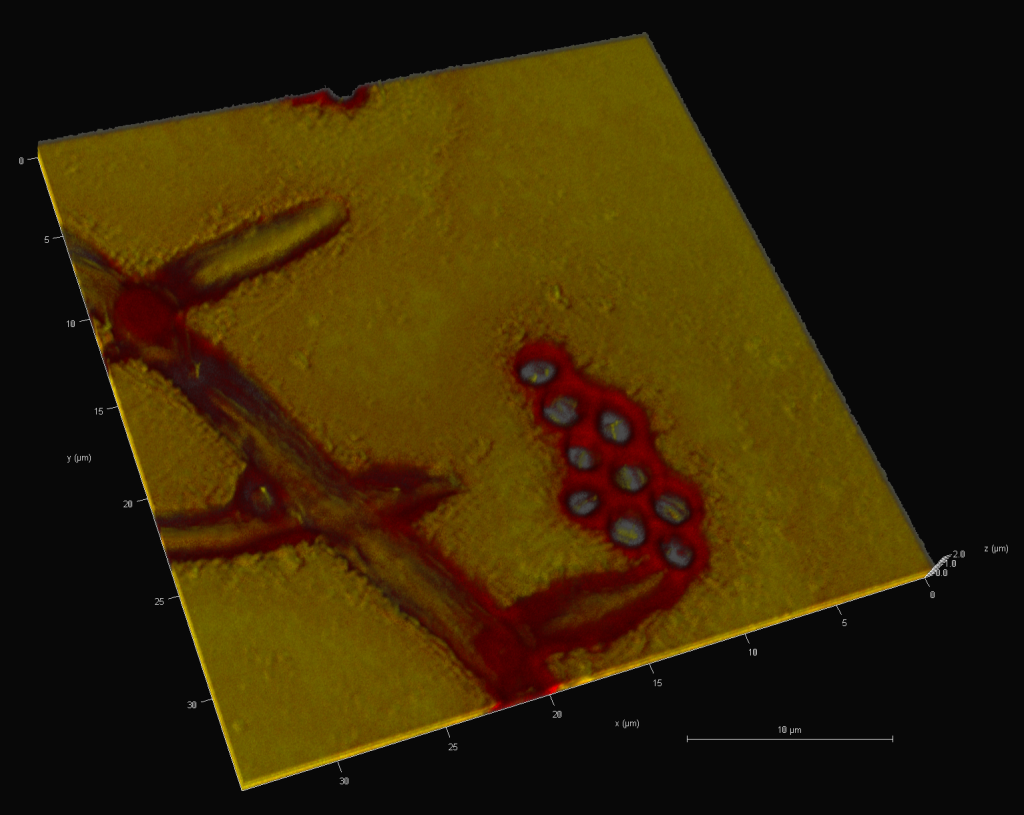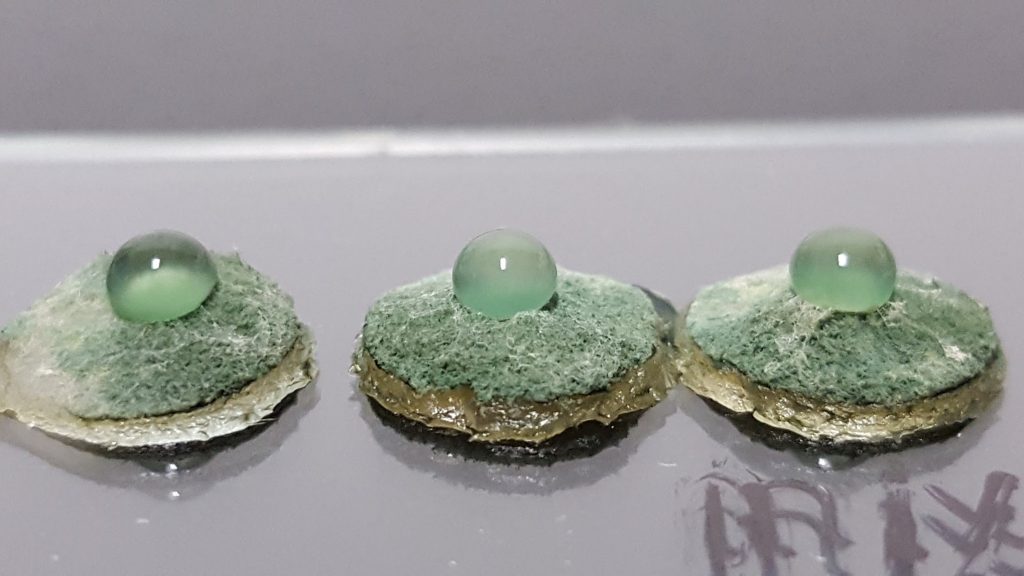
Higher filamentous fungi decompose organic matter, interact with other organisms, and produce metabolites, many of which are used by humankind in industry and medicine. They rely on absorptive nutrition and require a large surface area. Therefore, their body is shaped like a network of thin and long filaments or hyphae. The tubular lifestyle, however, brings such biological problems as overexposure to the environment, the loss of water/nutrients, and vulnerability to pathogens and abiotic stresses. Thus, the physicochemical properties of the hyphal surface are essential for the adaptation of a fungus to its ecological niche. In this project, we will focus on hydrophobins (HFB) and cerato-platanins (CP) that are small cysteine-rich proteins secreted exclusively by filamentous microbes. The amphiphilic nature of these proteins and their superior surface activity allow them to self-assemble in monolayers at liquid/air and liquid/solid interfaces to change the interface surface energy (hydrophobicity) and chemistry.
This project hypothesizes that HFBs are crucially important for fungal fitness because they can modulate the physiochemical properties of the hyphal and spore surfaces and thus play a role in the establishment of a fungus in its ecological niche. We propose using the genus Trichoderma because these fungi are ecologically versatile and have a high diversity of HFBs, CPs, and other surface-active SSCPs. The study consists of an in-depth molecular evolutionary analysis of SSCPs in Trichoderma and related fungi. It reveals possible mechanisms that resulted in the enrichment of HFB-encoding genes in Trichoderma. We also perform the homology modeling and heterologous production of the selected extant and resurrected Trichoderma HFBs, CPs, and other saSSCPs. We investigate the properties of saSSCPs and engineer of “tailor-made” proteins. A significant effort is dedicated to the physiochemical characterization of the produced saSSCPs by the standard proteomic techniques and with the use of a comprehensive toolkit of physiochemical and surface chemical methods. The analysis of saSSCP-gene regulation in different conditions of fungal development in the presence of biotic and abiotic stress factors and on a diversity of natural polymers. The novelty of our approach is the establishment of a systems biological view on saSSCPs in a given fungus using a combination of tools from fungal genomics, molecular biology, and physical chemistry. We hope to resolve the involvement of saSSCPs in the ecophysiological adaptations of fungi, i.e. in fungal fitness.

Recent project-related publications:
Cai F, Zhao Z, Gao R, Chen P, Ding M, Jiang S, Fu Z, Xu P, Chenthamara K, Shen Q, Bayram Akcapinar G, Druzhinina IS (2021) The pleiotropic functions of Intracellular hydrophobins in aerial hyphae and fungal spores. PLoS Genet 17(11): e1009924. https://doi.org/10.1371/journal.pgen.1009924
Cai, F., Gao, R., Zhao, Z., Ding, M., Jiang, S., Yagtu, C., Zhu, H., Zhang, J., Ebner, T., Mayrhofer-Reinhartshuber, M., Kainz, P., Chenthamara, K., Bayram-Akcapinar, G., Shen, Q., and Druzhinina, I. S. 2020 Evolutionary compromises in fungal fitness: hydrophobins hinder the adverse dispersal of spores and challenge their survival, The ISME J 14, 2610–2624 (2020). https://doi.org/10.1038/s41396-020-0709-0
Gao, R., Ding, M., Jiang, S., Zhao, Z., Chenthamara, K., Shen, Q. Cai, F., Druzhinina I.S. 2020. The evolutionary and functional paradox of cerato-platanins in the mycoparasitic fungi Applied and Environmental Microbiology 86:e00696-20
Zhao Z, Cai F, Gao R, Ding M, Jiang S, Chen P J, Pang G, Chenthamara K, Shen Q, Bayram-Akcapinar G, Druzhinina S I. 2021. At least three families of hyphosphere small secreted cysteine-rich proteins can optimize surface properties to a moderately hydrophilic state suitable for fungal attachment. Environmental Microbiology. doi: 10.1111/1462-2920.15413
Perez-Llano, Y., Rodriguez-Pupo, E.C., Druzhinina, I.S., Chenthamara, K., Cai, F., Gunde-Cimerman, N. et al. 2020. Stress reshapes the physiological response of halophile fungi to salinity. Cells 9.
Kubicek, C.P., Steindorff, A.S., Chenthamara, K., Manganiello, G., Henrissat, B., Zhang, J., Cai, F., Kopchinskiy, A.G., Kubicek, E.M., Kuo, A., Baroncelli, R., Sarrocco, S., Noronha, E.F., Vannacci, G., Shen, Q.*, Grigoriev, I.V., Druzhinina, I.S.*, 2019. Evolution and comparative genomics of the most common Trichoderma species. BMC Genomics 20.
